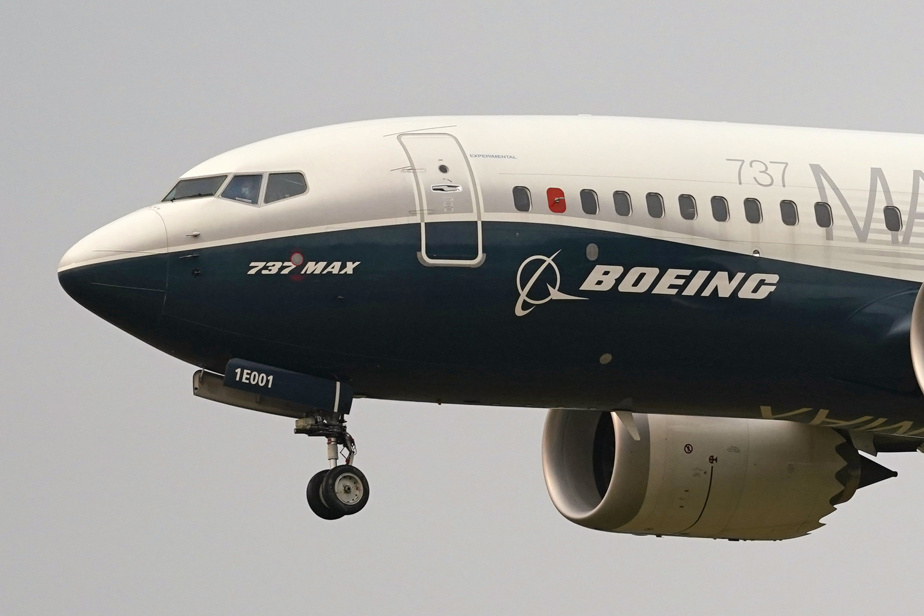(Paris) Boeing’s 737 MAX, victim of a spectacular incident on Friday in the United States, when a door of the plane came off, has had a tormented history since its launch.
At the end of August 2011, Boeing presented the 737 MAX, the fourth generation of its flagship 737 single-aisle aircraft, the best-selling commercial aircraft in the world.
More fuel efficient, the 737 MAX, designed for medium-haul flights, is supposed to counter the A320 Neo, presented in December 2010 by Airbus and which already had more than 1,200 orders and commitments.
Certified on March 8, 2017 by the American Aviation Agency (FAA), the 737 MAX made its first commercial flight on May 22, 2017, with the Malaysian company Malindo Air.
Boeing is facing strong demand, against a backdrop of an exponential increase in global air traffic, particularly from China. At the end of January 2019, 350 examples of the new jet had been delivered to their buyers, but more than 5,000 orders are still pending.
The success is overshadowed by a bottleneck among its subcontractors and suppliers, which causes delivery delays and leads Boeing to send its own employees to the factories of CFM, the joint venture between General Electric and Safran, which manufactures the new Leap engine.
The beautiful adventure is also quickly affected by two disasters.
On October 29, 2018, a 737 MAX from the Indonesian company Lion Air crashed into the sea about ten minutes after taking off from Jakarta, killing all 189 people on board.
On November 6, 2018, Boeing implicitly acknowledged that a sensor could be involved. The next day, the FAA ordered operators around the world to “immediately” carry out the revisions recommended by the aircraft manufacturer.
On March 10, 2019, an Ethiopian Airlines 737 MAX crashed a few minutes after taking off from Addis Ababa. All 157 passengers and crew members perished.
The global MAX fleet was quickly grounded across the world: it remained there for 20 months, while investigators determined the aircraft’s defects.
Investigations by Indonesian and Ethiopian authorities blame the MCAS anti-dropout software. The American regulator detected a problem with the flight systems management microprocessor and a fault with the electrical wiring. The Indonesians also denounce inadequate pilot training.
In December 2019, Boeing boss Dennis Muilenburg, whose management of the crisis was considered catastrophic, resigned.
Boeing, which stopped deliveries of the MAX a few days after the flight ban, is suspending production from January to the end of May 2020.
The following November 18, American authorities authorized the 737 MAX to fly again.
Several modifications will have to be made to the devices before they can be returned to service and pilots will have to undergo new training.
The Brazilian company Gol charters the first commercial flight in 20 months on December 9, 2020. Without issue.
Accused of fraud during the MAX approval process, Boeing agreed on January 7, 2021 to pay $2.5 billion to settle certain lawsuits.
After an extremely difficult year and a half due to the COVID-19 epidemic, the airline industry is starting to recover. Companies are placing large orders, such as Ryanair, which is purchasing 300 MAX planes in May 2023.
By the end of December 2023, Boeing had delivered more than 1,370 copies of the 737 MAX and its order book still reached more than 4,000 units.
On January 5, 2024, an Alaska Airlines flight narrowly avoided tragedy when a door came loose mid-flight on a 737 MAX 9 flying from Portland, Oregon to Ontario, California. No one was seriously injured, but the plane, at an altitude of nearly 5,000 m, was forced to make an emergency landing.
The next day, the FAA ordered the immediate inspection of 171 of Boeing’s 737 MAX 9 aircraft worldwide, which were suspended from flight until then, leading to the cancellation of already more than a thousand flights.
